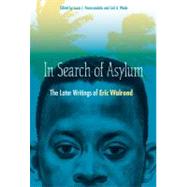- ISBN: 9780813035604 | 0813035600
- Cover: Hardcover
- Copyright: 3/6/2011
"A substantial step forward for black diaspora and black transnational literary studies."--Gary Edward Holcomb, author of Claude McKay, Code Name Sasha "Fills a significant void in our understanding of the life and literary career of Eric Walrond. By collecting, for the first time, the writings Walrond produced following his departure from the U.S. in 1928, Parascandola and Wade have done scholars a rich service."--Heather Hathaway, author of Caribbean Waves Eric Walrond is one of the great underexamined figures of the Harlem Renaissance and the Caribbean diaspora. Very little of his later work has been subsequently published or made readily available to American scholars. His writings, set in the Caribbean, the United States, and Europe, discuss imperialism, racism, the role of the black writer, black identity, and immigration--all topics of vital concern today. Born in British Guiana (now Guyana), Walrond moved to New York City in 1918 where he worked briefly for Marcus Garvey and became a prot#xE9;g#xE9; of Charles S. Johnson. During that time, he wrote short fiction as well as nonfiction and gained a measure of fame for his 1926 collection, Tropic Death. In Search of Asylum compiles Walrond#x19;s European journalism and later fiction, as well as the pieces he wrote during the 1950s at Roundway Hospital in Wiltshire, England, where he was a voluntary patient. Louis Parascandola and Carl Wade have assembled a collection that at last fills in the biographical gaps in Walrond#x19;s life, providing insights into the contours of his later work and the cultural climates in which he functioned between 1928 and his death in 1966.






